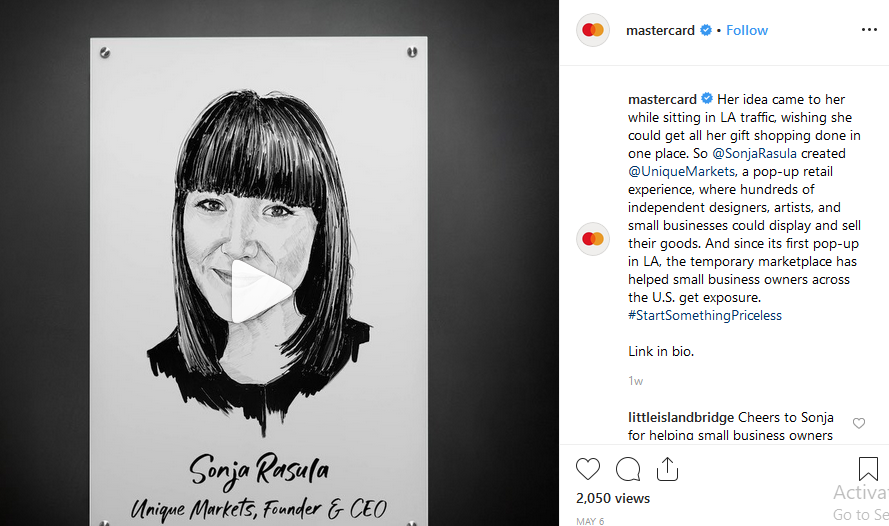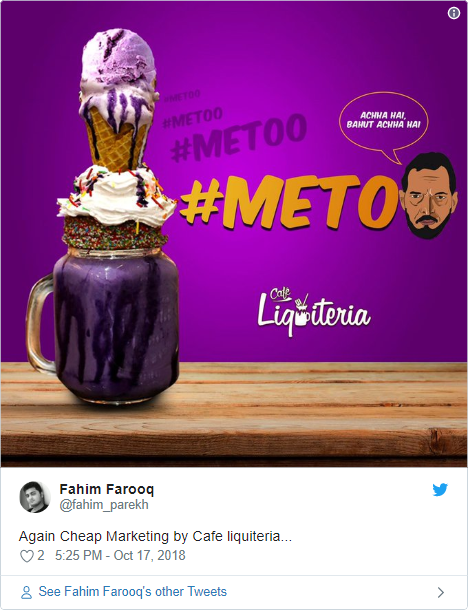Hashtags are powerful. When used properly, they can attract followers, increase engagement, help posts reach the desired target audience and develop a brand’s image. However, when used inappropriately, hashtags have the power to ruin social credibility.
While it can be all to easy to whack a few hashtags at the end of a post and hope for the best, an informed and appropriate strategy is a much more intelligent option. The last thing you want is to doom and otherwise brilliant social media presence. At my agency Contentworks, I oversee the social media management for leading brands in the finance and tech space. So check out some of the top hashtag mistakes you’re making.
#1 Using too many hashtags
If you’re hashtag happy, go grab a coffee and take some time out. There’s a misconception that more is better, but this is not true when it comes to promoting a post or marketing your brand. Of course, you want to stand out for relevant topics, but there’s no need to go overboard as this can come across rather spammy.
Using generic hashtags that are not branded or targeted in any way can also look unprofessional and trashy. Considering engagement levels drop by close to 17% when you use three or more hashtags, it’s best to keep your posts short and sweet.

And now the right way
Less is more. On Twitter, it’s best to stick to one or two hashtags with every post as this tends to increase engagement by 21%. Instagram allows up to 30 hashtags per post but posts with 11 hashtags receive the most engagement. This is the optimum number but it doesn’t mean that you should tag every one of your posts with 11 hashtags. In fact, 91% of top brands use seven hashtags or less.
The key tip here is not to go overboard. The number of hashtags you use should be determined by relevance to your posts. Overusing hashtags will only dilute your most-important marketing message.
#2 Creating hashtags people will never use
The idea of using your own branded hashtag may seem appealing especially as it helps people to join in conversations relevant to your company. That said, one of the common fails when creating your own hashtag is making it too long.
The below examples are big no-nos in the social media world:
#ourbrandisawesomethiswednesdayright or #trustuswithyourfinancialneedseveryday
Sorry if that just strained your eyes and gave you a bit of a headache. But that’s the point. Such hashtags are hard to read, uninteresting and are sure to lose the attention of your audience.
And now the right way
Don’t just go with the first thing that comes to mind when creating hashtags. Take a few minutes to develop alternatives. Chances are you will come up with something shorter, more succinct and catchier.
People tend to use attractive and relevant branded hashtags. Avoid common phrases as these will make it more difficult to associate your hashtag with your brand. Unique hashtags are more memorable.
#StartSomethingPriceless by Mastercard or #TeamVisa by Visa.

Now those are good hashtags.
#3 Jumping on tragic hashtags
It may seem like a good idea to piggyback on a tragedy to get more engagement. After all, the average social media engagement across all industries is less than 3%. That said; jumping on a hashtag that has no relevance to your brand such as #whyistayed, #metoo or #notredame looks cheap and is in very bad taste.
The #MeToo campaign shook the world with famous personalities sharing their stories of harassment in the workplace. The #metoo hashtags was used over 19 million times on Twitter. But unfortunately, one brand learnt the hard way that tragedy is not an opportunity to expand engagement and brand message.

And now the right way
Do not try to use sensitive hashtags to promote your brand. A good rule is to steer clear of using any hashtags tied to negative news.
The key is to research some positive trending topics that you can connect to your brand profile. If you really have to meddle with tragic hashtags, a non-branded message of tribute will work well.
#4 Launching a campaign without hashtags
Most successful brands normally launch advertising campaigns with an accompanying branded hashtag. Such hashtags help to garner momentum for a campaign.
A brand’s audience is likely to share user-generated content with the campaign hashtag and that’s great for business. Every time a user uses a branded hashtag in their posts, they increase the brand’s social media presence.
Launching a campaign without any hashtags makes it harder to monitor your audience’s reaction to your campaign. It will also make it less likely for your audience to start any conversations that mention the campaign.
And now the right way
Launching your campaign with a hashtag will give you the visibility that will foster growth and brand awareness. #MYCALVINS from Calvin Klein, for example, took over the internet. Within four months of the hashtag launching there were more than 4.5 million interactions between celebrity, influencers and brand-posted content. Iggy Azalea reached over 108,000 likes on her #MYCALVINS post alone. The campaign continues to involve different celebs in order to garner attention but the hashtag has remained consistent.

The first step in selecting a hashtag for your campaign is thorough research. A poor hashtag may be the undoing of your whole campaign. You need a hashtag that will be productive for your current goals.
Other important points to remember when creating your product launch hashtag are:
- Keep it specific to the campaign
- Make it short and memorable
- If using more than one word, capitalize the first letter of every word
- Make sure the hashtag is spelled correctly
- Avoid words that have an ambiguous meaning and profane connotations that may be misconstrued
Still not sure about the top hashtag mistakes you’re making? Contact me for assistance.